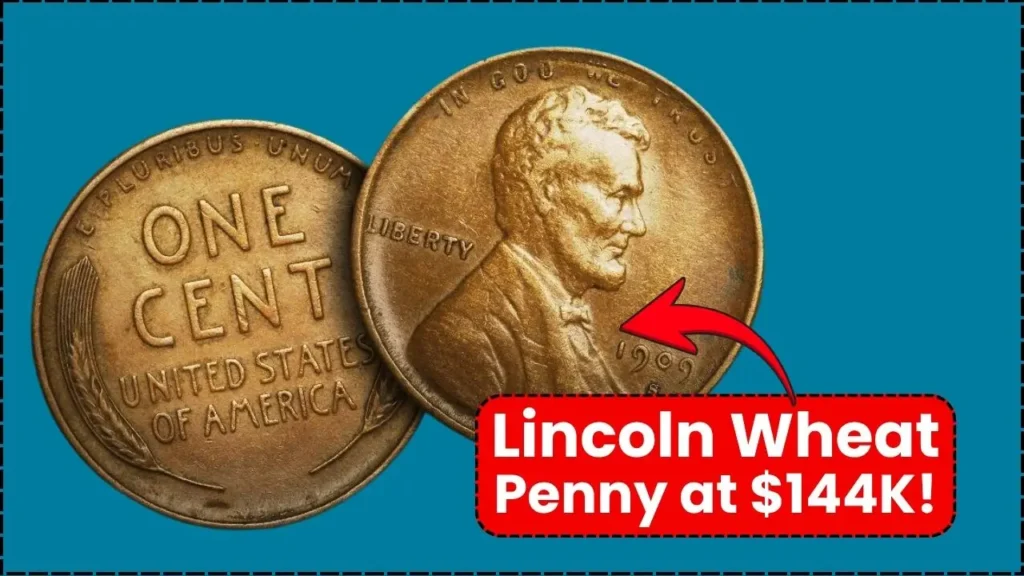If the question is whether a Lincoln Wheat cent can truly fetch six figures, the answer is yes—but only for extraordinary coins such as a certified 1943 bronze error or a finest‑known 1909‑S VDB. The Lincoln Wheat Penny Valued at $144K, Still in Circulation? is a headline built on genuine auction outcomes and a few famous change‑drawer discoveries from decades ago. Today, most coins that can command those prices are already authenticated, encapsulated, and traded through specialist auctions.

Let’s set realistic expectations. The Lincoln Wheat Penny Valued at $144K, Still in Circulation? reflects the market’s extreme upper tier: a verified 1943 bronze (copper) cent or a top‑population 1909‑S VDB in blazing red, ultra‑gem grades. These six‑figure results happen when rarity, condition, and provenance align. While a handful of legendary pieces surfaced in pocket change long ago, the odds of a modern cash‑register miracle are slim because most high‑value survivors are already known to the market.
Lincoln Wheat Penny Valued at $144K
| Focus | Key details | What to know |
|---|---|---|
| True six‑figure candidates | 1943 bronze (copper) error; top‑pop 1909‑S VDB; a few ultra‑gem Wheat cents | Extreme rarity plus elite grade can push beyond $100,000 at auction |
| “Still in circulation?” | Some famous coins were first found in pocket change decades ago | Today’s odds are tiny because most survivors are certified and tracked |
| Grade power | Full‑red, ultra‑gem Lincoln cents can soar in price | Copper surfaces and eye appeal create exponential value jumps |
| Authentication | Key dates and errors are often counterfeited or altered | Third‑party grading confirms authenticity and unlocks value |
| Market reality | Documented six‑figure results exist for the most famous pieces | Headlines reflect outliers; typical Wheat cents are modest in value |
What “Still in Circulation” Really Means
That phrase points to origin stories more than current probabilities. Decades ago, a teenager reportedly found a 1943 bronze cent in pocket change later selling for a headline sum and that lore still fuels interest. Today, with collectors and graders having sifted through countless coins, six‑figure Wheat cents rarely sit in everyday commerce, though it’s not impossible for a forgotten hoard to surface unexpectedly.
Key Rarities and How Lincoln Wheat Penny Reach $144K
- 1943 bronze (copper) cent: A genuine wartime error created when leftover bronze planchets were struck during the steel‑cent year. Verified examples remain trophy pieces and can bring six figures at major auctions.
- 1909‑S VDB: The classic first‑year key date with a small San Francisco mintage and a famous initials controversy. In ordinary grades it’s valuable; in finest certified “red” condition, it can approach or cross six figures.
- Ultra‑gem Wheat cents: Even otherwise common dates can command outsized premiums in MS‑68 Red when population reports are thin and registry collectors are competing.
How Value is Built: Rarity, Condition, Story
- Rarity: Low mintages and true mint errors create supply crunches.
- Condition: Copper is unforgiving; blazing red, ultra‑high grades command exponential premiums over average pieces.
- Story and provenance: Named collections, eye appeal, and clean ownership histories can amplify bidding.
Fast Checks Before Getting Excited
- 1943 “copper” test: Many 1943 steel cents are copper‑plated. A magnet will stick to steel; a true bronze 1943 should not be magnetic. Only professional authentication gives a definitive answer.
- 1909‑S VDB verification: Counterfeits often add an “S” mintmark or fake the VDB detail. Known mintmark shapes and diagnostics matter; certification is essential.
- Do not clean: Cleaning damages surfaces and slashes value. Submit the coin exactly as found to a major grading service.
Current Market Context and Trends
Six‑figure penny stories persist because a small set of coins especially the 1943 bronze error continues to achieve headline results. Condition premiums remain steep for copper: the jump from an already‑nice coin to a true ultra‑gem can be dramatic, which is why grading and eye appeal dominate competitive bidding.
Action Checklist for Potential Finds
- Compare date and mintmark against key lists start with 1909‑S VDB, 1914‑D, 1931‑S, and notable 1943 errors.
- For any 1943 “copper,” do a magnet test, then seek immediate professional authentication.
- If a coin looks unusually pristine (full red, minimal marks), consider certification; top‑pop status can transform value.
The Lincoln Wheat Penny Valued at $144K, Still in Circulation? is rooted in real but exceptional outcomes tied to the rarest errors and the finest‑known key dates. For anyone evaluating a potential find, the path is clear: verify the date and mintmark, avoid cleaning, and seek professional grading the combination of authenticity, condition, and provenance is what turns an interesting Wheat cent into a headline sale.
FAQs on Lincoln Wheat Penny Valued at $144K
Extremely rare; think authenticated 1943 bronze errors or finest‑known 1909‑S VDBs in elite grades, not typical circulated coins.
It’s possible but highly unlikely because most known high‑value examples are already graded and tracked by specialists.
Use a magnet. If it sticks, it’s steel or plated steel. A non‑magnetic 1943 is a candidate for professional authentication.
No. Cleaning harms original surfaces and typically reduces value. Submit coins as‑is to a reputable grading service.













 Claim Here!
Claim Here!